In early 2023, I produced an FC Como 1907 Analysis and their failure to adequately defend set plays.
Relegation was a possibility, although a good run to end the season allowed them to finish in the middle of the table.
Fast forward 15 months and many things have changed:
- Chelsea, Arsenal and Barcelona legend Cesc Fabregas has retired from the playing squad to become head coach of the U19 side. At the back end of 2023, he got the role of interim head coach of the first team, but due to a lack of the UEFA PRO license, he could only be in charge for one month, before joining the coaching staff under head coach Osian Roberts by becoming his assistant coach.
- Instead of a potential relegation scrap, Como are now at the top end of Serie B. Today is the final day of the season, and if they are able to match Venezia’s result, they will earn promotion to the Serie A for the first time since 2003.
- Stuart Reid has been appointed to take care of their set-piece struggles
Since mid-January when Reid got control of Como’s set plays, Como have been able to consistently become a threat from such situations.
In that time, Como FC have been able to score 28 league goals, 12 of which came from dead ball situations, resulting in 42.8% of goals being a result of Reid’s expertise, with Como even managing to score four goals from corner kicks in one game.
They have also gained more points than any other team in the league within the same time period.
These crucial points earned by outsourcing an important element of the game to an expert could be the difference between instant promotion and a playoff battle.
The corner kicks have been extremely difficult to stop for opposing teams due to Como’s flexibility and creativity in finding different routines to exploit the weaknesses of different defensive set-ups.
In this FC Como tactical analysis, we will delve into the tactics used by Como during attacking corner kicks, with an analysis of some of the many routines they have used to gain the edge.
This Como set piece analysis will look at the different attacking methods they’ve used to remain unpredictable and show how set pieces can help decide the winner in promotion battles.
Como 1907 Tactics – Attacking Space Through Horizontal Movements
One of the keys to Como’s success has been through horizontal runs, made parallel to the goal. Many of Como’s routines have included packing the attackers into the six-yard box, where the natural advantage is that the goalkeeper struggles to claim crosses due to the difficulty of moving through such crowded areas.
The second benefit is that any effort on goal from such a close distance is likely to result in a goal, with the goalkeeper having next to no time to react to the change of direction on the ball.
As we can see in the example below, one routine which is more frequently used against sides who leave space on the near side of the six-yard box, is the use of runs arriving from the back post, where attackers have ready-made advantages with separation because of their movement coming from the defenders’ blindside.
Players make their moves with good timing, and they are able to arrive in space as the ball does, meaning opposing defenders don’t have time to recover their positions.
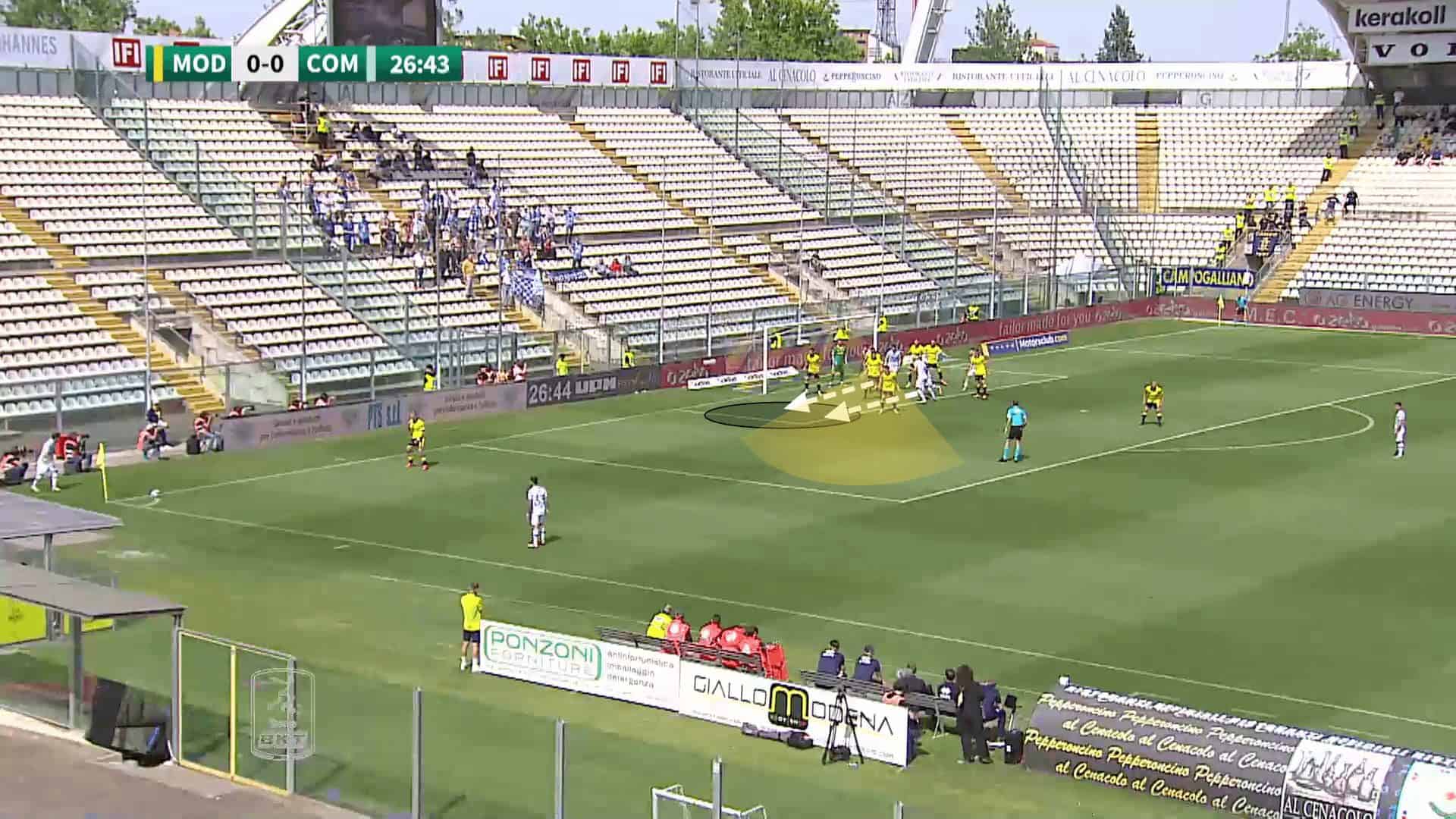
One tool used to increase the amount of space available at this near post area is through the use of screens. The screen is set on the nearest zonal player who could potentially get rid of the ball.
This guarantees the ball to arrive in the area highlighted, and with Como’s strengths in timing their movements, they are often able to arrive in the space first to make the first contact.
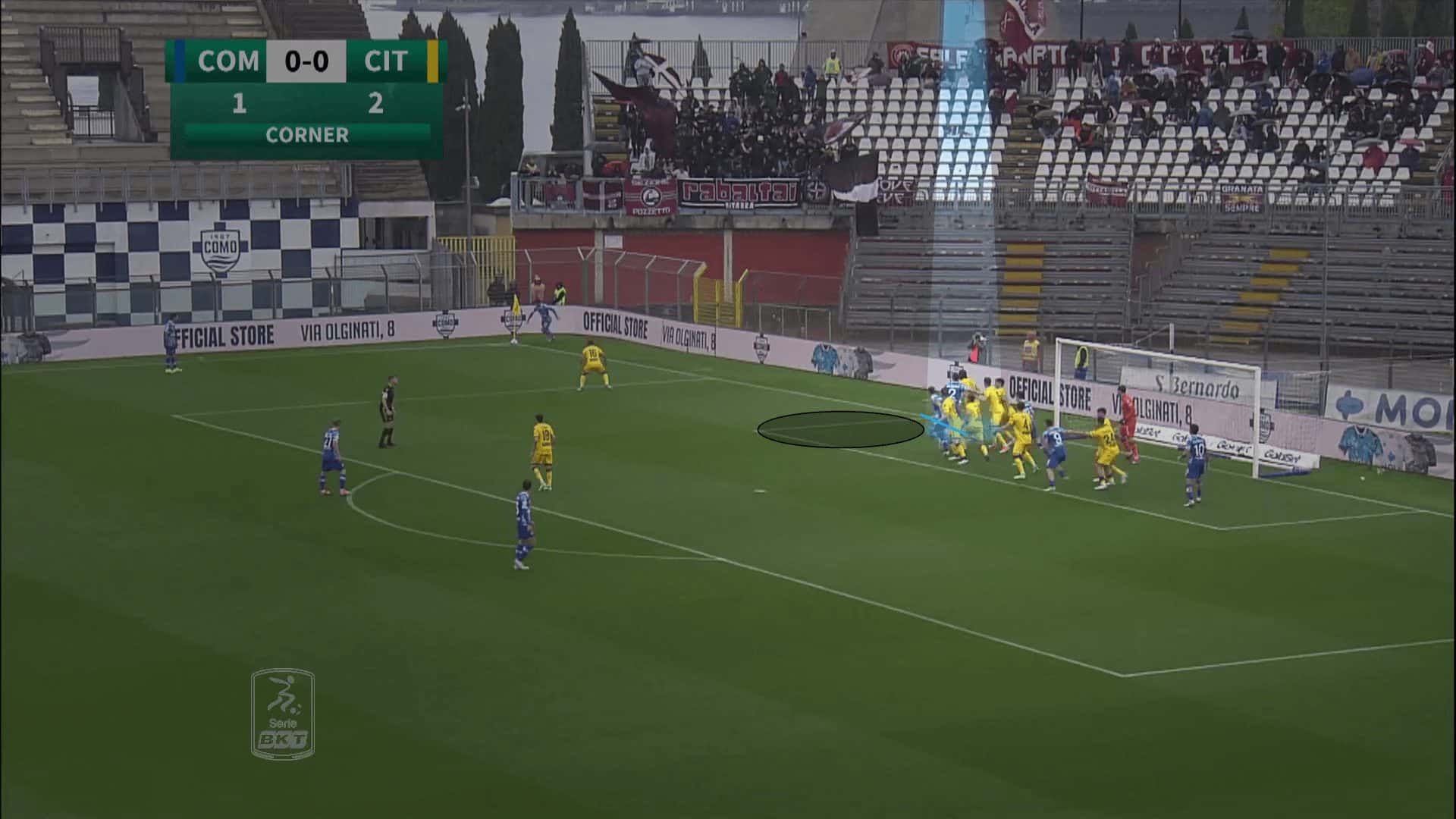
Their use of screens is quite subtle, and many routines include screens, but with the late execution, on purpose, it can easily be missed.
Setting the screen as late as possible helps to prevent the opposition from being able to anticipate what will happen, and by the time the screen is set, the attacker is released through to the six-yard box while the defender is still reacting to his surroundings.

Como stand out as a set-piece threat due to their ability to alter their actions based on the defensive structure and space available. Their use of screens is also full of intent, with different angles of screens set to protect specific spaces.
This also tells us they are well prepared as each attacker is on the same page to create space in one specific area for each corner.
What makes this even more impressive is how well coordinated Como are, while they use multiple different routines in each game.
From minute to minute, Como are capable of switching up their routines, and executing their actions in sync, while the opposition is setting up to defend a routine from the past.
In the example below, the opposition is prepared for the near post delivery, which they crowd with numerous bodies.
A prepared response shows Como using a screen on the central zonal defender to create the space in the centre of the six-yard box, the space that other defenders vacated to cover the near post.

The screens can also be used to highlight vulnerabilities in opposition systems. The image below displays the Lecco defensive set-up, which consists of three zonal markers spread across the width of the six-yard box.
The gaps between each zonal defender are quite large, meaning it is harder for defenders to cover the spaces between each other. Defenders have to vacate their positions early to have enough time to step across to help a defender in another zone.
When this is the case, using a screen on one of the zonal defenders can open up a big section of space inside the six-yard box, with the small number of zonal defenders meaning there is a lower chance of a defender covering the space.
The use of a screen on the last zonal defender can be particularly effective, like in the example below. Each zonal defender has their back to the defender behind them, with the aim of only protecting the space in front.
In this scenario, the last zonal defender has no one watching his back, meaning that the screen made on him isn’t recognised by anyone, and Como’s ability to identify this a lot of space around the back post area is highlighted below.
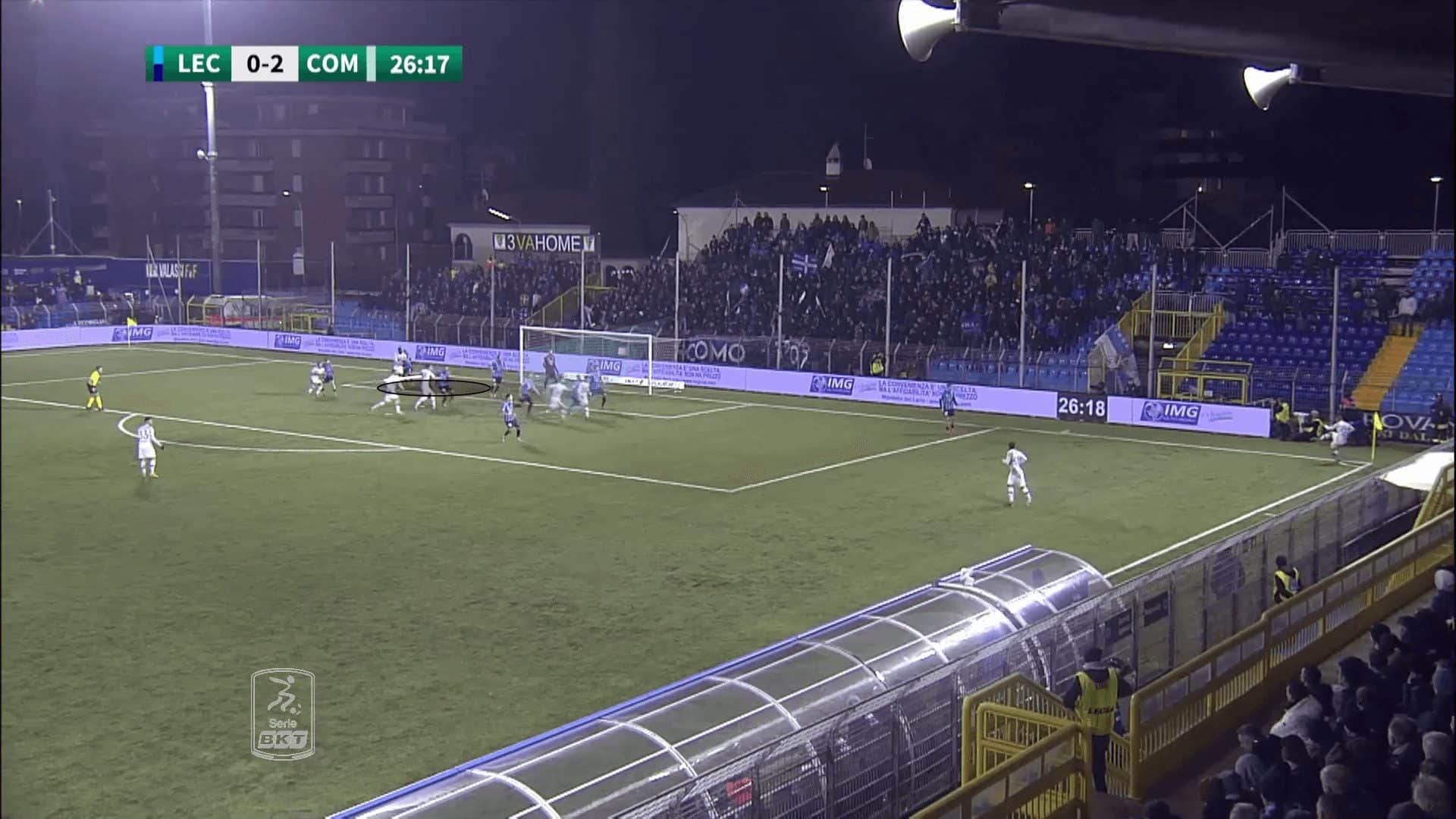
Ensuring The First Contact
When teams defend with most, if not all, outfield players inside their own box, it can be hard to find a space to target directly from the corner kick. Each dangerous zone is usually covered by a defender, whilst individual attackers are also tracked by a defender.
In these instances, a good method that Como have utilised is to have an attacker make a run to the far side of the six-yard box. The black area highlighted is never covered by defensive sides as it less threatening than other areas.
As a result, it can quite often easily be accessed, meaning attacking teams can guarantee they make the first contact by attacking that area.
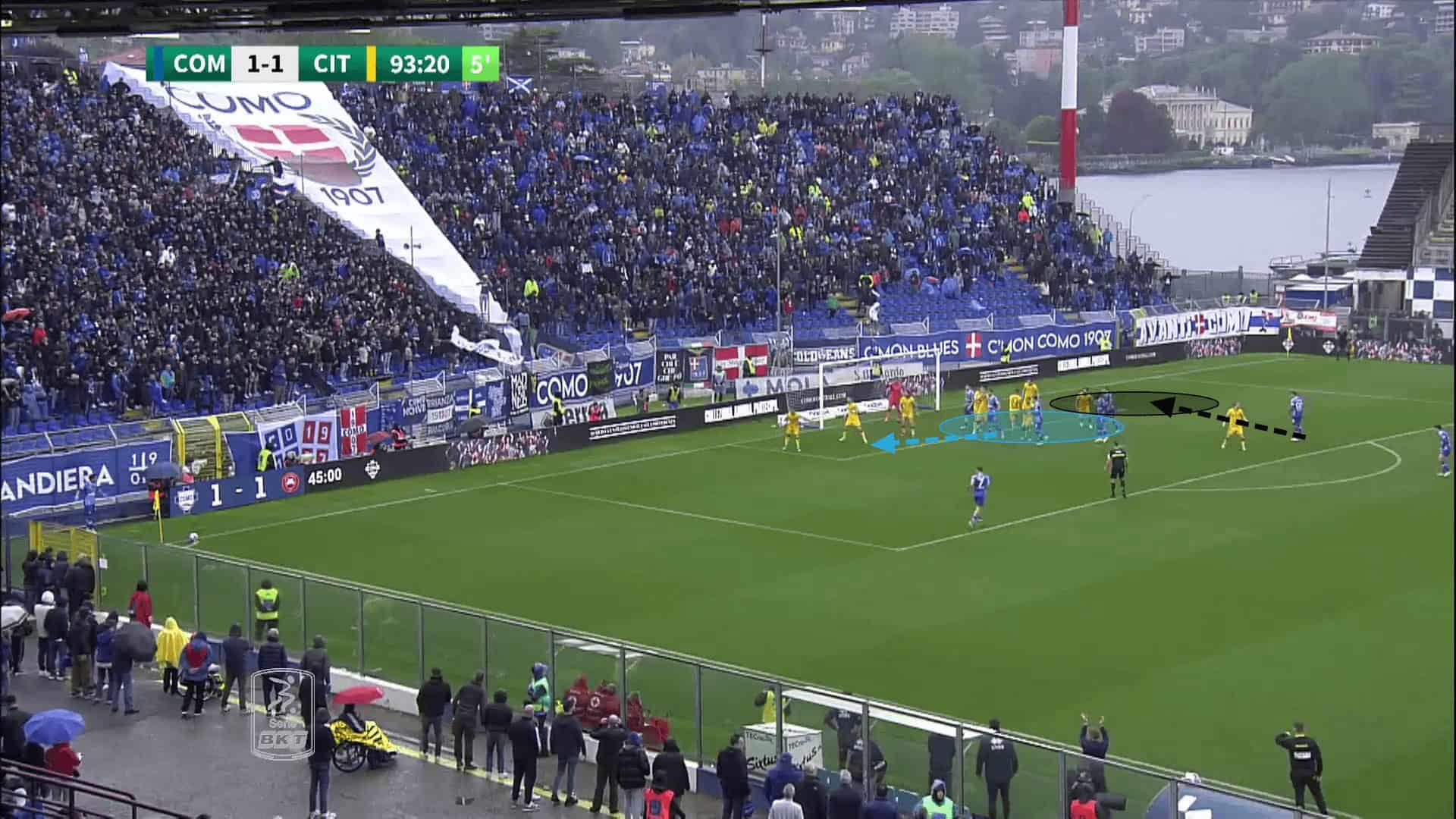
Of course, it can be difficult to score from the wide angle, which prevents people from attacking that area of the box.
However, teams can use this cross to access an area closer to goal, from which they can put the ball back into the six-yard box. The use of an additional pass before making the cross into the six-yard box has multiple benefits.
Firstly, as the ball travels over a longer distance, the defenders protecting the box begin to follow the ball with their eyes, and lose the attackers they were supposed to be marking.
This means that when teams face heavily crowded defensive set-ups, they can use the additional pass to help attackers lose their markers and have the separation to enter the six-yard box unopposed.
We can see in the image below that every defender is focused on the ball, which allows two attackers to find space inside the six-yard box, which eventually leads to a goal.
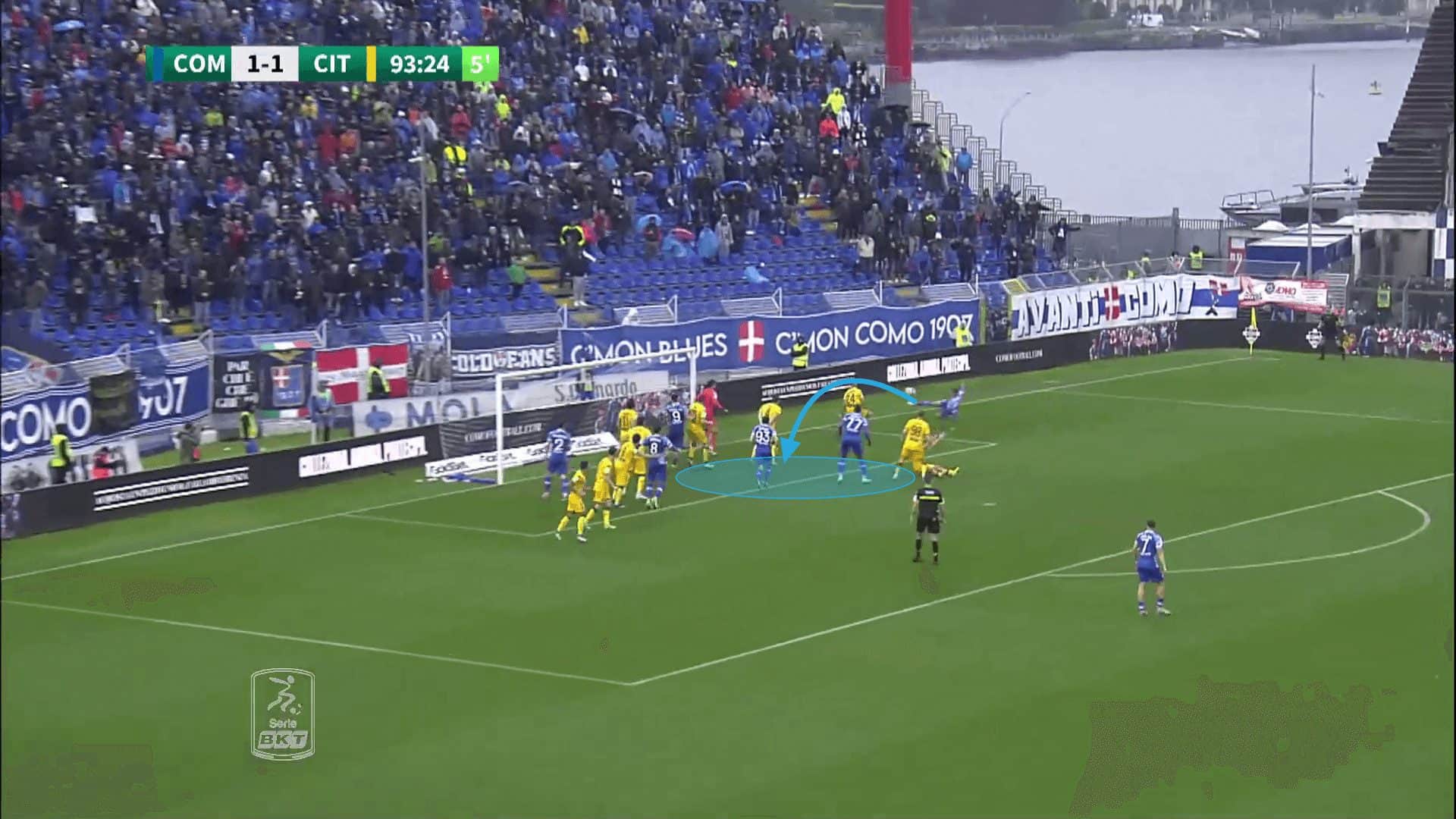
Another benefit of the cross to the far side of the penalty area is that from a position closer to the goal where the attacker receives the ball, it becomes easier to accurately feed the ball into the six-yard box in the area that is intended to be targeted.
Especially for teams in lower divisions, we can find crosses to be less consistent than would be ideal.
Allowing that final ball to be made from the position inside the black circle gives Como a higher chance of delivering the ball into the right part of the six-yard box, as the attacker only has to hit the ball over a 5-10-yard distance back where it came from.
Opposition defenders also have less time to react to the flight of the final ball and are less likely to cover the space the ball is heading towards.

Summary
This tactical analysis has detailed the different ways in which FC Como have been able to use set pieces to push for an automatic promotion spot.
Over the past couple of months, they have used an unbelievable amount of different routines and variations of the more common routines mentioned, so it isn’t possible to analyse each instance in one article.
If they do manage to earn promotion, these clearly thought out, well-planned set plays that are executed well with clarity in timing and orientation of runs and screens will give them a strong chance of sustaining their position in Serie A in future seasons.

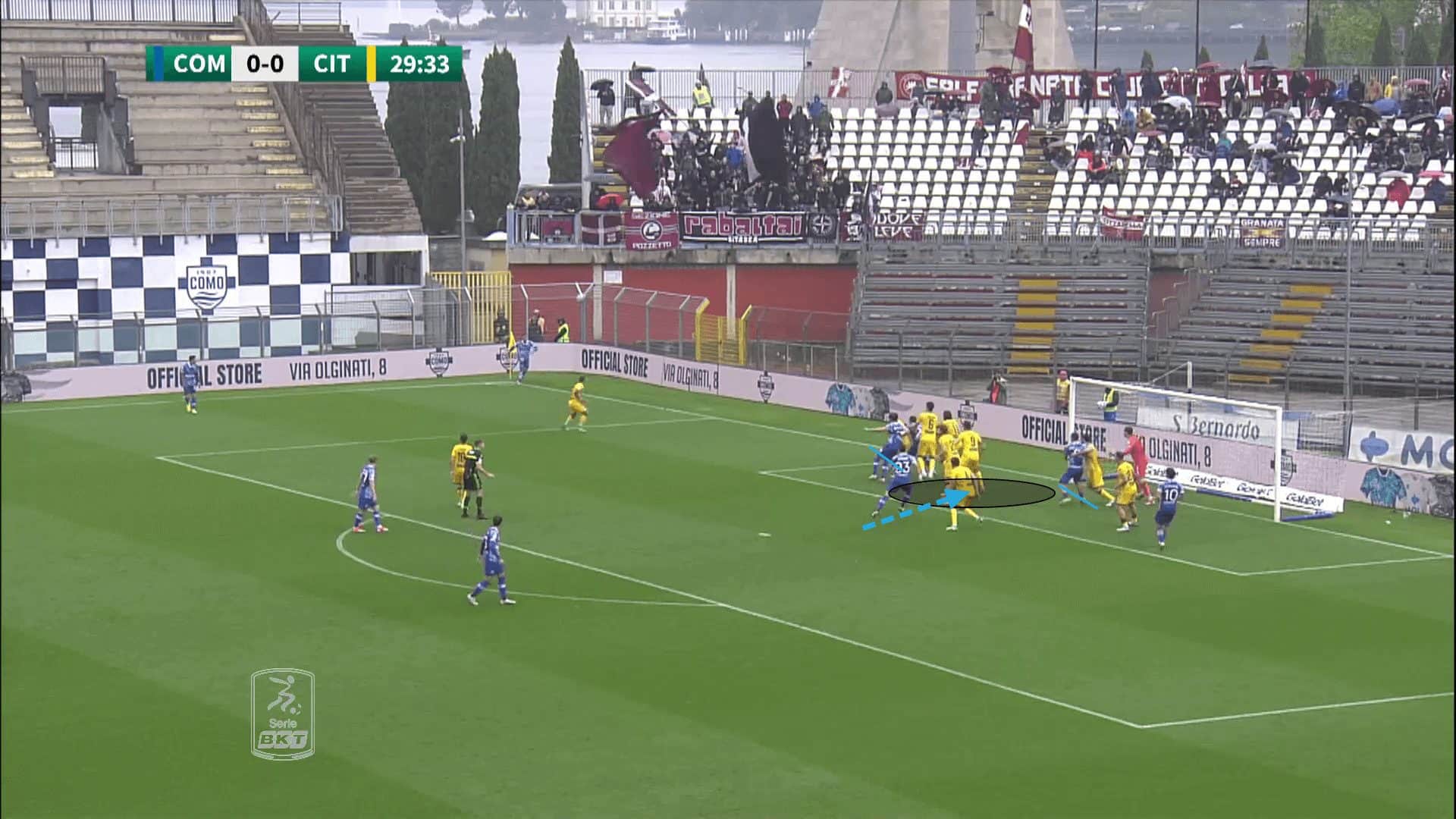




Comments